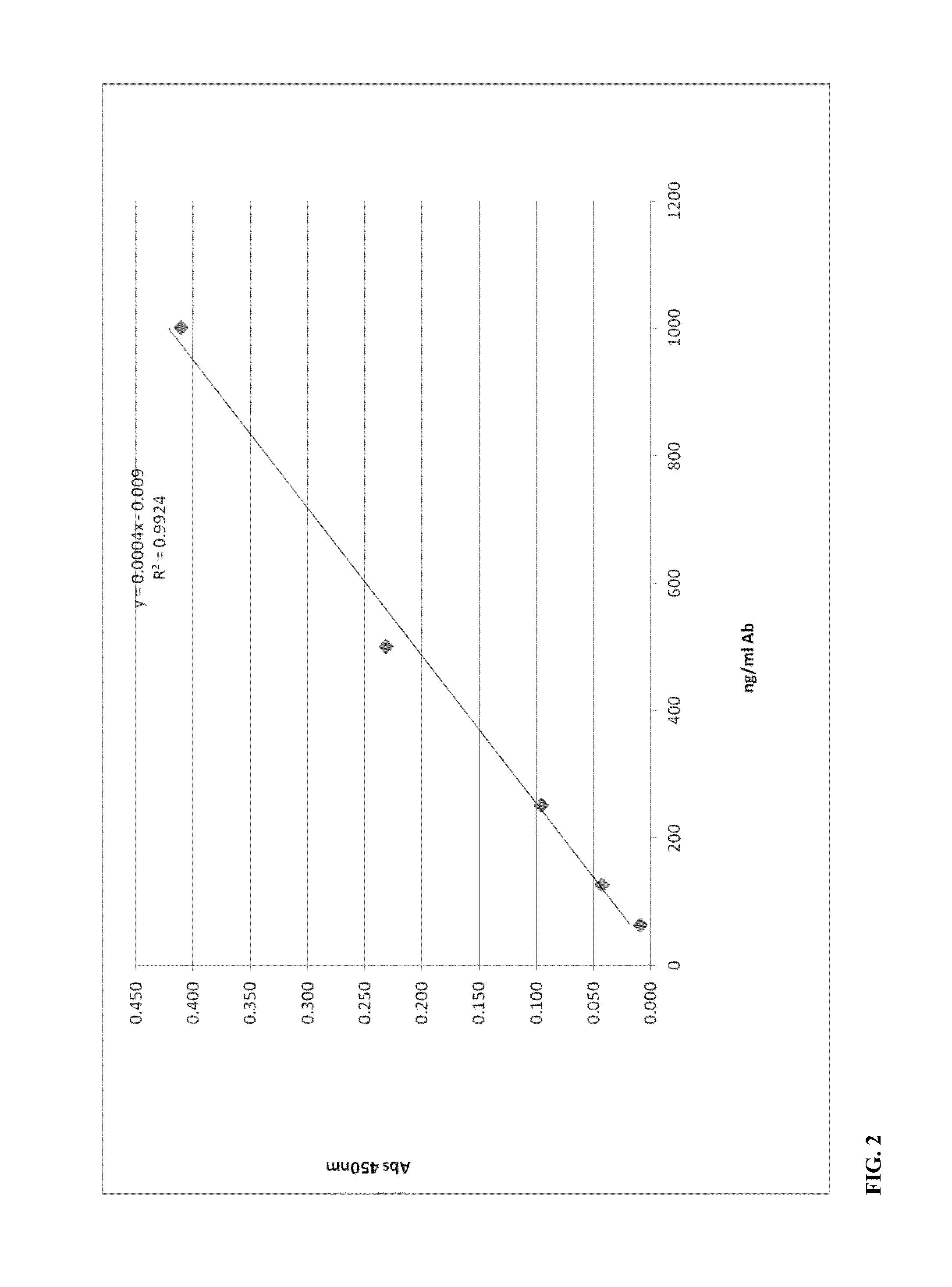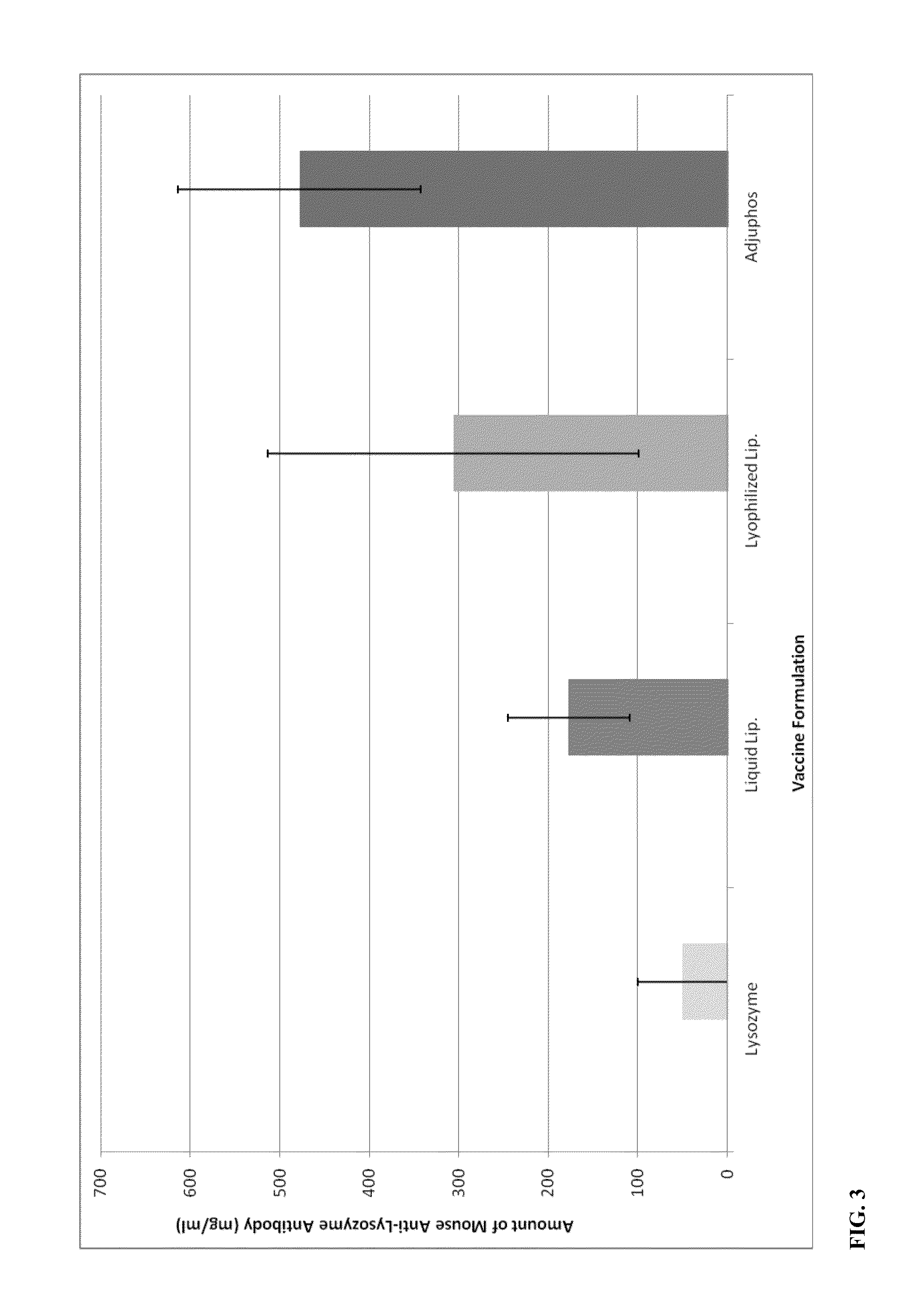Heat-and freeze-stable vaccines and methods of making and using same
a liposomal vaccine and heat-and-frozen technology, which is applied in the field of injectable liposomal vaccines, can solve the problems of impulsion of these vaccines to freeze, ineffectiveness, and risk, and achieve the effects of preventing product damage, significant immunogenicity, and stable against freezing
- Summary
- Abstract
- Description
- Claims
- Application Information
AI Technical Summary
Benefits of technology
Problems solved by technology
Method used
Image
Examples
example 2
[0044]A positively charged liposomal adjuvant systems was made in a similar fashion as described in Example 1, except with the lipid blend molar ratio of 40:25:20:15 containing DPPC:DOPC:cholesterol:SA. Recombinant tetanus light chain (TLC) was entrapped and / or associated with the lipid blend by hydration in the protein solution. The solution was subjected to three freeze-thaw cycles and extruded through 800 nm pore nucleopore membranes. The free unassociated TLC was removed by dialysis and the liposomal TLC complex was diluted to around 200 ng / ml protein. As a control, a non-adjuvant solution of just the TLC solution was injected into mice. All the solutions were dosed at 10 ng TLC per mouse. One intramuscular injection of 50 ul / mouse was administered into 5 mice per group and serum was collected following two weeks after the second booster injection of the test articles. Immunogenicity to the Tetanus Toxoid was evaluated using the mouse Anti-Tetanus Toxoid IgG ELISA Kit that detec...
PUM
| Property | Measurement | Unit |
|---|---|---|
| molar ratio | aaaaa | aaaaa |
| size | aaaaa | aaaaa |
| temperature | aaaaa | aaaaa |
Abstract
Description
Claims
Application Information
 Login to View More
Login to View More - R&D
- Intellectual Property
- Life Sciences
- Materials
- Tech Scout
- Unparalleled Data Quality
- Higher Quality Content
- 60% Fewer Hallucinations
Browse by: Latest US Patents, China's latest patents, Technical Efficacy Thesaurus, Application Domain, Technology Topic, Popular Technical Reports.
© 2025 PatSnap. All rights reserved.Legal|Privacy policy|Modern Slavery Act Transparency Statement|Sitemap|About US| Contact US: help@patsnap.com



